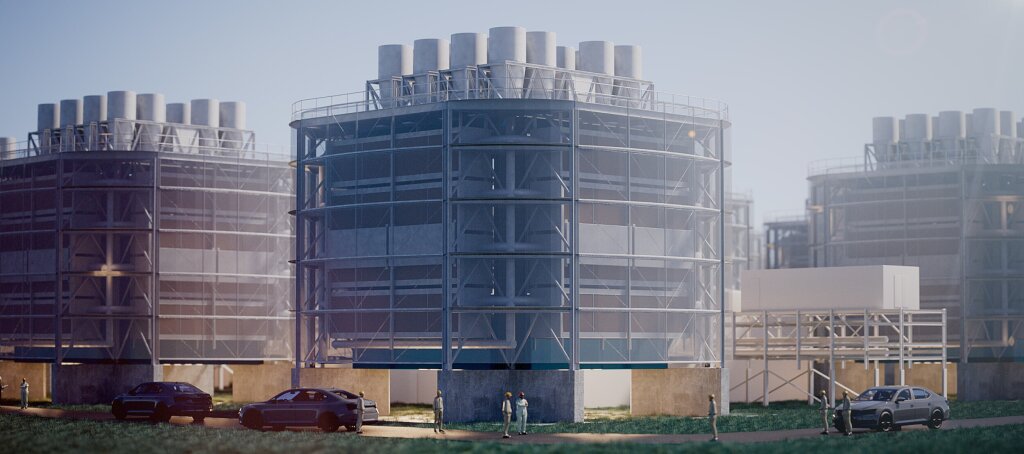Bussiness
Next generation tech powers Climeworks’ megaton leap

This website requires Javascript for some parts to function properly. Your experience may vary.
Key take-aways:
-
Climeworks reveals its latest Generation 3 direct air capture technology to scale up to megaton capacity. This new technology will first be deployed in the U.S. and then replicated globally on secured project sites.
-
Generation 3 technology and design have been developed and validated over the past five years and implemented at full scale for the first time in June 2024 at its largest direct air capture testing facility in Switzerland.
-
The first large-scale testing has confirmed the anticipated breakthrough in efficiency and performance due to the embedded novel CO₂ filter systems and process configurations.
Climeworks is future-proofing its technology for scaling globally to gigaton carbon removals by using the latest research and development findings in its filter materials and plant design. At its annual Carbon Removal Summit in Zurich, Climeworks showcases the success of its Generation 3 direct air capture (DAC) technology: doubling CO₂ capture capacity per module, halving energy consumption, increasing material lifetime, and cutting costs by 50 percent.
Double throughput – half the energy
The Generation 3 technology uses novel structured sorbent materials replacing the packed filter beds used in previous technology generations. The new structures increase surface contact with CO₂, reducing the time to capture and release CO₂ by a factor of at least two, thus capturing more than twice as much CO₂ as previous filters. The new filter materials consume half the energy and are designed to last three times longer than prior materials. Generation 3 technology represents a major milestone in Climeworks’ cost reduction strategy, which aims to achieve costs of 250-350 USD per ton captured and total costs of 400-600 USD per ton net removal by 2030. This represents an overall cost reduction of up to 50 percent compared to today.
Head start through largest testing facilities
The journey began in Climeworks’ small and medium-sized testing facilities in Zurich, where the new technology was refined before testing at Climeworks’ large-scale testing facility in Basel, Switzerland.
Climeworks has a 180 people strong Research & Development team, including 50 specialists dedicated to the development of Generation 3 technology. These specialists accumulated 15,000 hours of testing new sorbent materials and ran 5,000 CO₂ capture and release cycles to optimize the system’s durability and efficiency. Climeworks transformed its collector concept from traditional stacked collector containers to sleek, modular cubes. These cubes have been redesigned to increase capture efficiency, reduce costs and boost robustness. They measure each 26 by 26 meters and stand 22.5 meters tall (85 by 85 feet and 73 feet tall).
Forefront of innovation: megaton hubs in the U.S. and beyond
The first plant utilizing this new technology generation, including new cube design, will be built in Louisiana as part of the megaton-scale “Project Cypress DAC Hub” funded by the U.S. Department of Energy. Construction is set to begin in 2026 and would mark another tenfold scale-up step towards megaton capacity. In addition, Climeworks is part of two further megaton hub proposals in the U.S. and is actively developing projects in Norway, Kenya, and Canada, as well as exploring further sites on its journey towards gigaton capacity.
You will also find this in the following languages:
Learn more about Climeworks’ journey to gigaton scale:
Lead the race toward net zero
High-quality carbon removal for your climate strategy.
isFlyoutOpen = window.scrollY > Math.min((document.body.clientHeight – window.innerHeight – 200), window.innerHeight * 3);
}”
x-show=”isFlyoutEnabled && isFlyoutOpen”
x-transition:enter=” transition ease-out duration-300″
x-transition:enter-start=”opacity-0 translate-y-44″
x-transition:enter-end=”opacity-100 translate-x-0″
x-transition:leave=”transition ease-in duration-300″
x-transition:leave-start=”opacity-100 translate-x-0″
x-transition:leave-end=”opacity-0 translate-y-44″
class=”relative z-behind py-6 bg-green-light shadow-[0_15px_20px_10px_rgba(0,0,0,0.1)]”>
Monthly industry updates from Climeworks
No cookies = No worries: We don’t use 3rd party cookies and only use the cookies we strictly need to keep our website functioning. Our website usage data is 100% cookie-less, anonymized, safely stored in Switzerland and under our full control. For more information, please check out our privacy notice.








:max_bytes(150000):strip_icc()/roundup-writereditor-loved-deals-tout-f5de51f85de145b2b1eb99cdb7b6cb84.jpg)


